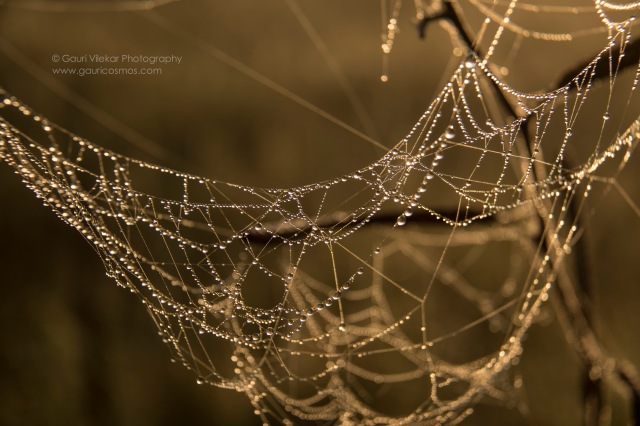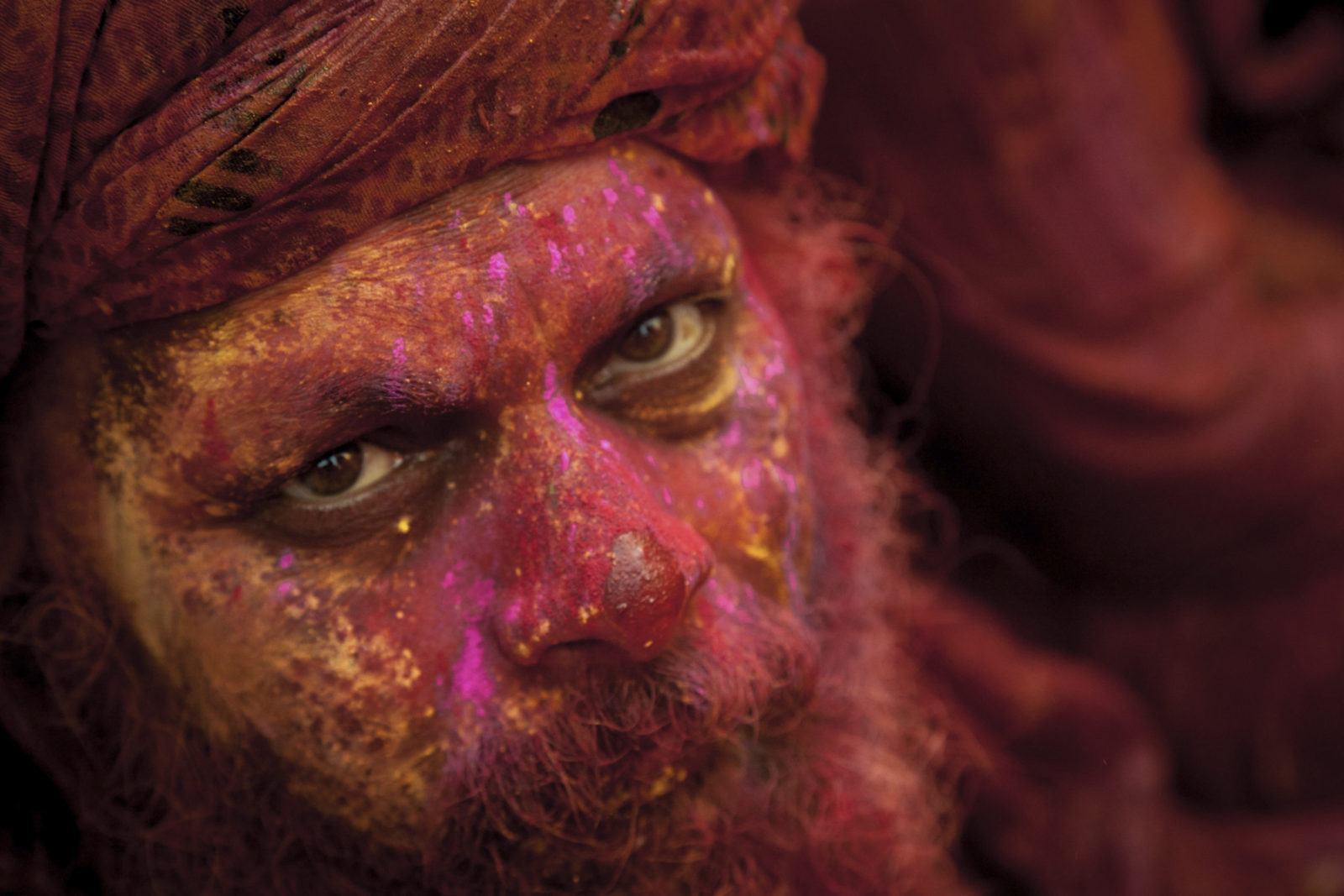
In the wee hours of a chilly winter morning, I quietly tiptoed towards the verandah on the squeaky floor of my stilted bamboo hut, ensuring that I don’t wake up my peacefully snoring husband. The verandah looked onto a small pond daubed with hyacinths. Mist gently rose from its surface and drifted into the air like floating white spirits. The only sound I could hear was the occasional ‘bloop -bloop’ of few fish in the pond. A stretches of golden paddy fields swayed in the backyard of the ‘Ygdrasill Cottage‘. Dew-soaked cobwebs shimmered like beautiful diamond necklaces on dried weeds. A sleepy Majuli was waking up from underneath a thick blanket of fog to the golden hues of a beautiful sunrise..



Majuli is an unruffled river island on the magnificent Brahmaputra river in Assam. It is believed that originally, Majuli was just a long stretch of land in between two parallel rivers. However, due to frequent earthquakes and floods over decades, Brahmaputra moved in southward into the other river, Burhidihing; thus giving birth to the largest river island of the world.


Renting a bike from Beda, the owner of Ygdrasill; we rode on narrow, unpaved roads passing through brief patches of bamboo canopies and swamps dotted with Chinese fishing nets and canoes. (I was convinced that Chinese fishing nets orCheenavalas were only specific to Kerala, until I saw them here as well). Tribal bamboo huts built on stilts saved the houses from being washed away in the frequent floods. People were at work in the vast paddy fields already, Children played in the courtyards of their tiny homes while adorable baby goats bleated around joyfully.
A visit to the Satras : After a simple breakfast of Poori, Sabzi and wheat Burfi at a small local eatery, we reached Kamalabari Satra. Majuli presently has only around 22 Satras or monasteries, of the 65 satras constructed in the 16th century by the saints of the Vaishnavite culture. A Satra is a hub of art, cultural, literature and classical studies for the Vaishnavites of Majuli. Kamalabari translates to “Orange Garden” in Assamese. The Satra had a huge arch at the entrance. To its right was an auditorium where a few Gurus taught classical dance to a group of almost 30 young boys and girls. A long string of rooms attached to a common corridor occupied three sides of the Satra. Every room had a beautifully carved entrance with heaps of harvested rice crops stacked at the doorway. At the centre of the Satra, a clean and peaceful shrine rested amidst fruit and flower bearing trees. We relaxed in the sanctity of the Satra for a bit before proceeding to Samaguri.
The mask man of Chamaguri : I could have easily overlooked his Satra if it wasn’t for the spooky mask that hung outside his home. A simple man in his 50’s sat in a white dhoti and vest in the courtyard, engrossed in shaping the tooth of an unfinished demon mask. Sri Hem Chandra Goswami is reputed in Majuli for his expertise in mask making and more so, for his tireless efforts in keeping his family’s age-old tradition alive. I stepped into a dingy room filled with 80-odd masks of various sizes, shapes and characters. There were face masks of monkeys, bulls, birds, deities, demons and full-sized body masks of tigers and mythological legends. The most prominent features of all masks were their protruding teeth and bulgy white eyes. The skeleton of the masks were made by weaving straw and covering it with a coat of clay and dung. A tender bark of a tree resembling thermocol was used for the teeth and mustaches. The masks were left to dry thoroughly before getting painted. Sri Goswami gets visitors from all corners of India and the world; not to mention the dozen trophies and recognitions to his credit. Apart from his unmatched talent, I was also greatly moved by the fact that despite of all his achievements, he had managed to stayed simple, humble and grounded.
Hemchandra Goswami of Chamaguri Satra and his creations..


Salmora, Mishing and Deori : One thing that stood out about the tribal villages of Majuli was that women were equal bread-earners of their families. In a another village called Salmora, women had taken up pottery for sustaining their livelyhood. Outside their small hut, a housewife and her mother-in law moulded pots on a small disc rotated by hand. Around 50 pots were neatly arranged at one corner to dry. The lustrous grey clay used for making these pots was collected from the riverbed, a few feet away from their house. Clay is available for free and in abundance to Salmora, since it rests right on the banks of Brahmaputra. Each pot roughly takes ten mins to mould and approximately three days to dry before making its way into the local market. While pots are made by the women, men take the onus of selling them in the market. The houses in Salmora sat right on the clay banks, making its people vulnerable to floods and erosion, however, this proximity was also the very source of their livelihood.



Women are equal bread-earners of their homes in Majuli
A few kilometers ahead, women in village of Mishing had taken up weaving. I was dumbfounded to see women, who barely knew to read or write, operating the hand-loom with ease and perfection. They wove delicate silk and cotton sarees, shawls and traditional wrap-around skirts (Mekhala) with intricate floral and geometrical patterns in beautiful color combinations! Weaving an entire saree or a Mekhala, thread by thread takes upto 3 months and gets sold for anywhere between INR 2000 to 3500 depending on the fabric and complexity of the design. In Mishing as well, women executed the weaving while men took the final products to the market. It was amazing to see the dedication of the Mishing women, going above and beyond the burden of their routine chores with a smile on their faces and warmth in their hearts!
The handlooms extended to other nearby villages too, including Deori. Deori was more remote with houses built amidst beetle nut trees and on taller stilts. The tribes of Deori also engaged in making items like stools, mats and thatches from cane and bamboo.


We drove through many small villages in Majuli throughout the day, passing through alluring panoramas of fields and wetlands. A little before sunset, we stopped on a bridge over a swamp where tens and thousands of whistling ducks, pintails and coots bathed to glory in a hullabaloo of whistles, quacks and splish-splash. On the serene banks of Brahmaputra, the sky had begun to cast shades of brilliant gold and orange as the sun melted over the horizon. A river dolphin dived on a shallow edge while a Majhi (boatman) sailed his last trip of the day on the shimmering waters. In no time, Majuli cuddled silently under the cozy blanket of fog under the twinkling night sky.
There is a saying in the North East that whoever crosses Brahmaputra once, is bound to cross at least 7 more times. At the break of dawn, when my ferry left the banks of Majuli, I bid adieu with a secret wish to touch its shore again..

Snippets
About Majuli: Majuli is worth a visit for its landscapes and tribes. However, tourism barely exists. There are hardly any hotels or amenities.
How to reach: Majuli can only be reached by a ferry from Neemati ghat. The nearest town ,Jorhat, also has an airport. Share autos ply from Jorhat to Neemati. Ferry from Neemati starts at 7.30 am or 8 am (depending on the season) and ply every one hour until 10 am and then at 3 pm. It takes 1.5 hours to reach Majuli. Follow the same route on your way back, however the ferry takes upto 2.5 hours or more while return since Neemati is upstream.
Where to stay: Ygdrasill Cottage is heavenly but economical @ 1200 per cottage. Food extra. Contact Beda on 88767 07326. La Maison De Ananda is another good option and is well known for the delicious food spread. The satras also provide cheap stay. Check http://majulilandscape.gov.in/tourism_stay.php
When to go: Nov-Jan is the best season
How to travel: Rent a bike from your cottage. No other option if you wish to explore the island in limited time.
What to do: Visit a few important Satras as mentioned in my blog above. Don’t forget to visit the mask man of Samaguri Satra. Visit the tribal villages of Mishing, Salmora and Deori. Interact with the locals.
Its also important to do nothing at Majuli and just soak up the surroundings. Sunrise at Ygdrasill is heavenly in winters. Sunset at the view point is a must-see.


